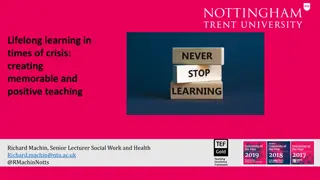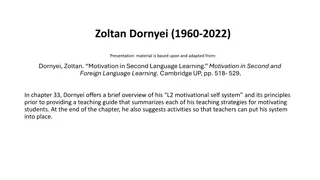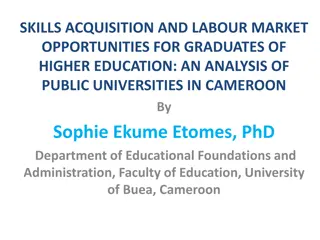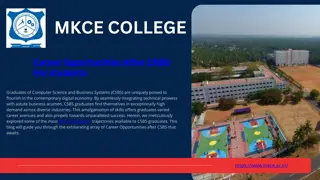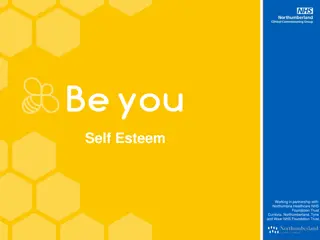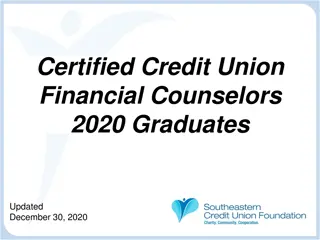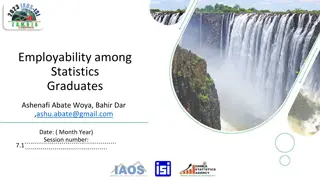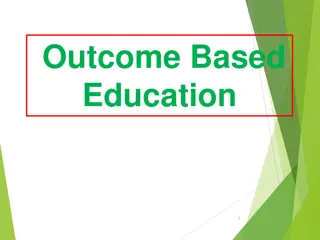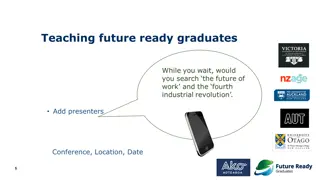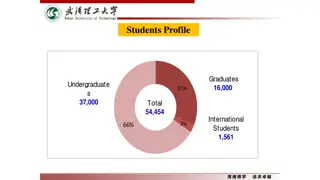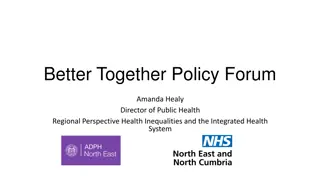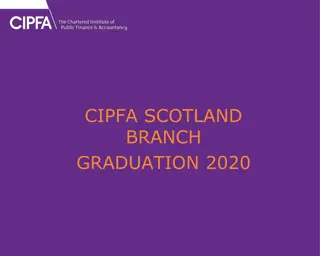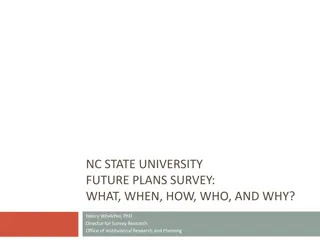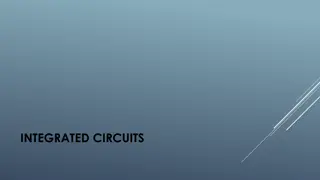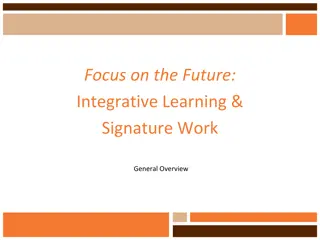Empowering Future Graduates through Self-determined Technology-Integrated Learning
Preparing future-ready graduates requires a focus on personalized, self-determined technology-integrated learning. This approach emphasizes Elearning 2.0 and self-determined learning, equipping students with the skills and mindset needed in a rapidly evolving technological landscape.
Download Presentation

Please find below an Image/Link to download the presentation.
The content on the website is provided AS IS for your information and personal use only. It may not be sold, licensed, or shared on other websites without obtaining consent from the author.If you encounter any issues during the download, it is possible that the publisher has removed the file from their server.
You are allowed to download the files provided on this website for personal or commercial use, subject to the condition that they are used lawfully. All files are the property of their respective owners.
The content on the website is provided AS IS for your information and personal use only. It may not be sold, licensed, or shared on other websites without obtaining consent from the author.
E N D
Presentation Transcript
Preparing Future-Ready Graduates through Personalised, Self-determined Technology- Integrated Learning Eddie Yeou Nanyang Polytechnic, Singapore
Outline 1. Future Ready Graduates 2. Conceptual Framework Elearning 2.0 Self-determined Learning 3. Blended eLearning 2.0 Environments 4. Findings & Discussions 5. Implications
Future-ready Graduates Future-employment-ready? Work/Practice-ready? 21st Century-ready? Everything/Anything-ready? VUCA (volatile, uncertain, complex, ambiguous) world Technology/media-suffused world 21st Century Skills such as professional communication. Source: p21.org
BM0022 Effective Business Writing Module Learning Outcome: Learners equipped with career-focused communication skills Topics: The 5Cs of effective business writing Business messages (Bad news, persuasive messages etc.) Agenda and minutes of meeting Resume and cover letter Formal business report Source: p21.org
Research Design Explore the effectiveness of using eLearning 2.0 and self-determined learning for 21st Century skills professional communication skills What does elearning and elearning look like for future- ready graduates? Quasi-experimental design 12-week intervention Pre and post questionnaires Pre and post proficiency tests 10 classes, 241 participants, 5 instructors
Conceptual Framework Heutagogy eLearning 2.0 (Self-determined Learning) Open, flexible eLearning conception that places learners in a social, personalised, adaptive learning process (Haj-Bolouri, Flensburg, & Thapa, 2016) Holistic, learner-centred approach learner negotiation, flexible curriculum, co-development (Blaschke & Hase, 2016) Personalised, Blended eLearning 2.0 Environments Converged blended technology- integrated learning environment
Blended eLearning 2.0 Environments Transformed Traditional Goal setting Curriculum delivery and learning activities negotiation Blended eLearning 2.0 environments: - Guided experiential learning via Instructor-led tutorials with writing drills and exercises - Peer learning through self-directed tutorials with embedded collaborative e-activities - Self-directed learning via integrated e-learning activities - Self-directed learning via web-based elearning packages: Online writing strategies, strategies for writing professional documents - Social learning on Facebook writing group - Authentic learning via online case studies and real-world situations - Competency-based learning approach to curating additional elearning content Co-teaching opportunities where learner teams presented writing solutions and taught writing strategies Performance-based learning through group project work and assessed using performance tasks Formative and summative assessments with assessment negotiation Reflective learning through summative reflection on skill building and growth Structured lesson plans Blended learning environments: - Guided experiential learning via Instructor-led tutorials with writing drills and exercises - Self-directed learning via elearning replacement of topics - Self-directed learning via instructor-supervised elearning completion during tutorials - Self-directed learning via web-based elearning packages: Online writing strategies, strategies for writing professional documents - Authentic learning via offline case studies and real-world situations Formative and summative assessments Reflective learning through summative reflection
Blended eLearning 2.0 Environments eLearning packages, Web 2.0 activities, co-teaching activities E-Lesson Plan Learners can negotiate what, how, how much to cover. Technology-integrated activities with authentic professional communication challenges
Findings Social Media Habits Experimental n=114 Control n=127 Age (median) 18 yrs old 95 (83.3%) 18 yrs old 101 (79.5%) 5 years 91 (79.8%) 5 years 94 (74%) No. of years using social media 6 times 96 (84.2%) 6 times 103 (81.1%) No. of times accessing social media per day 1 hour 108 (94.7%) 1 hour 114 (89.8%) No. of hours spent on social media per day Learners started on social media in pre-teens. High social media consumption per day
Findings Learning Preferences Experimental n=114 Control n=127 Learning format preferences Social Media/Online In-class Group-based/Peer-based 3.48 3.36 2.96 3.47 3.45 3.04 Learners preferred social media/online learning. Learners may favour the freedom more though!
Findings Self-determined Characteristics N Mean Std. Deviation T Experimental 104 3.37 .63 2.49* Control 120 3.16 .62 *p<.05 Learners: More likely to take charge of own learning. More willing to suggest topics, negotiate delivery & learning activities, & experience greater control of learning Increased perceived writing proficiency gains
Findings Proactivity Proactivity .483** Learner Negotiation Correlation Coefficient Sig. (2-tailed) N .000 104 Learner s Sense of Control Correlation Coefficient Sig. (2-tailed) N .414** .000 104 Higher learner negotiation and sense of control translated to higher learner proactivity More likely to seek additional coaching, pursue learning beyond the classroom
Findings Digital Literacy Digital Literacy (Technology-embedded Activities) Learner Interest Correlation Coefficient Sig. (2-tailed) N .562** .000 104 Learner s Extra Learning Correlation Coefficient Sig. (2-tailed) N .542** .000 104 Technology-embedded activities were corelated with learner interest and extra learning. Learners more likely to enjoy learning, and learn beyond the topic.
Findings Learners Co-Developed Content Learners co-developed high quality, relevant, participatory content!
Implications eLearning 1.0 s transmissive mode increasingly challenged Shift towards a multiplicity of skills Skills building comes first for future-ready graduates using heutagogy (personalised, self-determined learning). Perhaps, future-ready educators are urgently needed! Blended eLearning 2.0 environments may well be a viable future for preparing future-ready graduates.
For enquiries, explorations, collaborations & future possibilities: Eddie Yeou School of Business Management Nanyang Polytechnic Eddie_Yeou@nyp.edu.sg




